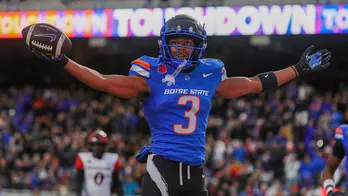Indian football has Vision 2047 but does it have the legs?
If there is a word to describe the tone of the All India Football Federation’s 24-year strategic road map, ‘Vision 2047’ ‘truthful’ would be it. The 94-page roadmap puts down in clear terms Indian football’s reality. We are not the sleeping giant needing to be roused into excellence by sounding trumpets and clashing cymbals. Or hosting FIFA junior World Cups. Or creating franchise leagues out of thin air and that imagining top-down works.  PREMIUM
PREMIUM
Today Indian football has – and these are words from Vision2047 itself – an “insufficient number of games at elite level”, “lack of defined pathway between grassroots and youth structure”, “weak competitive structure of youth football”, “low level of state and district matches” “not enough sustainable livelihood options”, “low levels of economic return creating a hindrance to career adoption across levels”, “short-term outlooks insufficient investment in creating infrastructure, youth development and scouting structure”, “number of coaches significantly lower below global benchmarks” etc etc. What our football has is a “short league duration and a substantially lower number of domestic matches across the pyramid” which, the AIFF says is “detrimental to the optimum development of players.”
\This was known, discussed and lamented over often across Indian football, but to have the ruling body acknowledge and put it down unvarnished is a relief. A set of darned hard-to-decipher graphics offers more reality checks. That there is a co-relation between the level of a country’s national performance and the number of teams/ matches in their top-tier league. The top 20 men’s teams of the world have an average of 17.6 teams in their highest league, offering more playing time to their players per season. India’s men on average play between 20-24 matches a season, while the majority number across the world is between 30-34 matches. Among the women, the top 20 countries have an average of 11.3 teams in their league. The Indian Women’s League featured 12 teams in 2021-22, with a promise of 15 for 2022-23, higher than England’s 12. India’s women play an average of 10-14 matches a season like 45 other countries, closer to the global average than the men. India’s football future, as this column has argued before, must be female.
Vision 2047 is mercifully minus any grandiose pronouncements of the kind proliferated during Praful Patel AIFF presidency. That India ‘should aspire’ to qualify for the 2022 World Cup which then became ‘mission’ for WC2026. We are spared the other Patel narrative-grabber favourite - hosting junior World Cups, promising to pitch for the u-20 World Cup3 as a means of gaining entry into the competition. Praise be. But any plan spanning 24 years can easily become amorphous, not easy to keep tracking. But by breaking the 24 years down into six four-year slabs, we have at least been given the first four-year chunk whose objectives we can stayed focussed on.
The To-Do by 2026 list has several challenging objectives: to have 40 professional teams in men’s football working at the top three layers (14 teams in the ISL, 14 in I League-I and 12 in I League-2) of a 5-level pyramid. Outside the pyramid is a bottom rung of feature 60 individual city/districts leagues, feeding into state championships and 5 zonal leagues. From grassroots up, the aim is to reach 35million kids and have 1million registered players (as against 146900 registered today) by 2026. Plus 700 developmental clubs, offering 35 matches per youth player across elite and youth league, plus making youth teams mandatory for all professional clubs and a core centre to train youth referees. Among other things.
This is from a cursory look at Vision 2047. People involved far more closely with Indian football will can no doubt offer a very reasoned and granular assessment. The segment that will come under the greatest scrutiny in terms of being the first layer of viability is about marketing and commercialisation. The AIFF’s annual budget is said to be around ₹80 crore, “substantially lower than counterparts in Asia making funding the required competition structures in a vast country challenging.” By 2026, the AIFF’s aims to increase its revenue 500% and launch 3 flagship television properties.
This is where the role, presence and influence of AIFF president Kalyan Chaubey, former pro goalkeeper also member of the ruling BJP, is meant to come into play. To fulfil even half of the 2026 objectives requires sizeable and sustained investment from industry and business. Chaubey now is best positioned via political connections to unearth, reach out, unearth or create new stakeholders for Indian football. That, we are often told, is the reason it is actually good to have politicians in sports administration. Indian football today is a living test for that argument.
Unlike our cricket which, despite publicity to the contrary, neither requires nor has a marketing genius running the BCCI today, Indian football is at the stage politely referred to as s**t or bust, i.e. go for it or sink. It will need forward-thinking administrators and professionalised management – plus a dose of political clout? - to bring its fractious membership – states, clubs, egos – together. To push ahead and become a part of a modern footballing ecosystem, without shouting ‘World Cup’ every four years. And maybe demonstrate to other federation brethren what largely professionalised management and reasonably good governance in Indian sport can achieve.
Experience unrestricted digital access with HT Premium
Explore amazing offers on HT + Economist Start 14 Days Free Trial Already Subscribed? Sign In
Disclaimer: The copyright of this article belongs to the original author. Reposting this article is solely for the purpose of information dissemination and does not constitute any investment advice. If there is any infringement, please contact us immediately. We will make corrections or deletions as necessary. Thank you.







